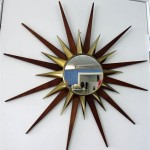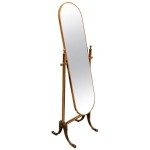How To Mirror Your iPhone XR to a Samsung TV
Mirroring an iPhone XR screen to a Samsung TV can enhance various activities, from viewing photos and videos to delivering presentations. This process allows users to project the iPhone's display onto a larger screen, providing a more immersive and collaborative viewing experience. There are several methods available, each with its own advantages and disadvantages. This article will detail the common methods for mirroring an iPhone XR to a Samsung TV, outlining the necessary equipment and steps involved for each.
Before starting any mirroring process, it is essential to ensure that both the iPhone XR and the Samsung TV are connected to the same Wi-Fi network. This is a prerequisite for most wireless mirroring solutions and ensures stable connectivity. Both devices should also be updated to their latest respective operating systems. For the iPhone XR, this means ensuring the latest version of iOS is installed. For the Samsung TV, navigate to the settings menu and check for any available software updates. Keeping both devices updated helps address any potential compatibility issues and optimize performance.
Using AirPlay 2 for Seamless Mirroring
AirPlay 2 is Apple's proprietary wireless streaming protocol, designed to facilitate seamless audio and video transmission between Apple devices and compatible TVs. Many recent Samsung TV models are equipped with AirPlay 2 support, making it a straightforward and convenient method for mirroring an iPhone XR screen.
To initiate AirPlay 2 mirroring, begin by swiping down from the top-right corner of the iPhone XR screen to access the Control Center. Locate the "Screen Mirroring" icon, which resembles two overlapping rectangles, and tap on it. A list of available AirPlay devices, including the Samsung TV, should appear. Select the desired Samsung TV from the list.
Upon selecting the Samsung TV, a passcode may appear on the TV screen. Enter this passcode on the iPhone XR to establish the connection. Once the connection is established, the iPhone XR screen will be mirrored onto the Samsung TV screen. The content displayed on the iPhone XR will be replicated in real-time on the TV, allowing for easy viewing of photos, videos, and other applications.
To stop mirroring, return to the Control Center, tap on the "Screen Mirroring" icon, and select "Stop Mirroring" from the list of devices. The connection between the iPhone XR and the Samsung TV will be terminated, and the TV screen will return to its normal display.
AirPlay 2 offers a relatively simple and reliable method for mirroring, provided the Samsung TV is compatible. The performance is generally good, with minimal lag and high-quality video streaming. However, AirPlay 2 relies on a stable Wi-Fi network, so any network interruptions can affect the mirroring experience.
Utilizing an HDMI Adapter for a Wired Connection
For situations where wireless connectivity is unreliable or unavailable, a wired connection using an HDMI adapter provides a more stable and direct mirroring solution. This method involves physically connecting the iPhone XR to the Samsung TV via an HDMI cable and an adapter that converts the iPhone's Lightning port to an HDMI output.
To establish a wired connection, acquire a Lightning to HDMI adapter. These adapters are readily available from various retailers and come in both official Apple and third-party versions. Connect the Lightning end of the adapter to the iPhone XR's charging port. Then, connect one end of an HDMI cable to the HDMI port on the adapter and the other end to an available HDMI port on the Samsung TV.
Once the physical connections are made, power on the Samsung TV and select the corresponding HDMI input source using the TV's remote control. The iPhone XR screen should then be displayed on the TV. The wired connection provides a direct and reliable signal, ensuring minimal lag and high-quality video output. This method is particularly useful for applications that require precise timing, such as gaming or presentations.
The wired connection eliminates reliance on a Wi-Fi network, making it a more stable option in environments with poor wireless connectivity. However, it requires the purchase of an HDMI adapter and an HDMI cable. It also limits the mobility of the iPhone XR, as it must remain physically connected to the TV during mirroring.
Exploring Third-Party Apps for Screen Mirroring
In addition to AirPlay 2 and HDMI adapters, several third-party apps offer screen mirroring functionality between iPhones and Samsung TVs. These apps often provide additional features and customization options, making them a viable alternative for users seeking greater control over the mirroring process.
Several app options exist, including "Replica," "MirrorMeister," and "AirBeamTV." These apps generally function by installing corresponding applications on both the iPhone XR and the Samsung TV. The iPhone app captures the screen and streams it to the TV app. The TV app, in turn, displays the received stream on the Samsung TV's screen.
To use these apps, begin by downloading and installing the appropriate app on both the iPhone XR and the Samsung TV. Ensure the apps are compatible with both devices. Launch the app on both devices and follow the on-screen instructions to establish a connection. This usually involves selecting the Samsung TV from a list of available devices in the app.
Once the connection is established, the iPhone XR screen will be mirrored onto the Samsung TV. The performance and quality of the mirroring may vary depending on the app and the network conditions. Some apps offer additional features, such as adjustable video quality, screen rotation control, and the ability to mirror specific applications rather than the entire screen.
Third-party apps can provide greater flexibility and customization options compared to AirPlay 2 or HDMI adapters. However, they may also introduce potential security risks, as they require granting access to the iPhone XR's screen. It is essential to choose reputable apps from trusted developers and review their privacy policies before installation. Additionally, the performance of these apps can be affected by the speed and stability of the Wi-Fi network.
Each of these methods presents different benefits depending on the user's situation and needs. AirPlay 2 offers a wireless and convenient experience, while HDMI adapters provide a stable wired connection. Third-party apps offer flexibility and customization, but require careful selection and consideration of security implications.
Troubleshooting screen mirroring issues often involves verifying network connectivity, ensuring software updates are installed, and checking compatibility between devices and applications. If the mirroring connection is unstable, try restarting both the iPhone XR and the Samsung TV. If using AirPlay 2, verify that AirPlay is enabled in the TV's settings. If using an HDMI adapter, ensure that the cable and adapter are properly connected and that the correct HDMI input source is selected on the TV.
Screen mirroring relies on several factors to perform optimally, including, but not limited to, network bandwidth, device processing power, and the complexity of the content being mirrored. High-resolution videos and graphically intensive applications require more bandwidth and processing power, which can potentially lead to lag or stuttering if the network or devices are not capable of handling the load. Similarly, the distance between the iPhone XR and the Samsung TV, and the presence of obstacles that can interfere with the Wi-Fi signal, can impact the performance of wireless mirroring methods. Careful consideration of these factors can help ensure a smoother and more enjoyable screen mirroring experience.
For wireless methods, minimizing interference from other electronic devices can improve stability. Devices such as microwaves, cordless phones, and Bluetooth devices can sometimes interfere with Wi-Fi signals, leading to dropped connections or reduced bandwidth. Try moving these devices away from the iPhone XR and the Samsung TV, or consider using a different Wi-Fi channel to minimize interference.
Before attempting to mirror the screen, it's also useful to check the display settings on both the iPhone XR and the Samsung TV. Ensure that the resolution and refresh rate are set appropriately for both devices. A mismatch in display settings can sometimes cause compatibility issues or visual artifacts. Refer to the manuals for both devices for specific instructions on adjusting display settings.
Furthermore, some apps may have specific requirements or settings that need to be configured for screen mirroring to work correctly. For example, some video streaming apps may disable screen mirroring to prevent piracy. Check the app's documentation or support resources for any specific instructions or recommendations.

How To Screen Mirroring Iphone Samsung Tv

Iphone Xr How To Mirror My Screen Tv Or Pc

How To Connect Your Iphone Xr Tv Mobile Fun Blog

How To Connect Your Iphone Xr Tv Mobile Fun Blog

Mirror Iphone To Samsung Tv No Apple Needed
Why Can T I Mirror My Iphone To Samsung Tv Quora
What Is The Process For Mirroring An Iphone On A Samsung Smart Tv Quora

How To Mirror Or Cast Your Iphone Tv Whistleout

Iphone 13 S 14 How To Airplay Samsung Smart Tv Wireless Screen Mirror

Effective How To Mirror Iphone Samsung Tv Airdroid








